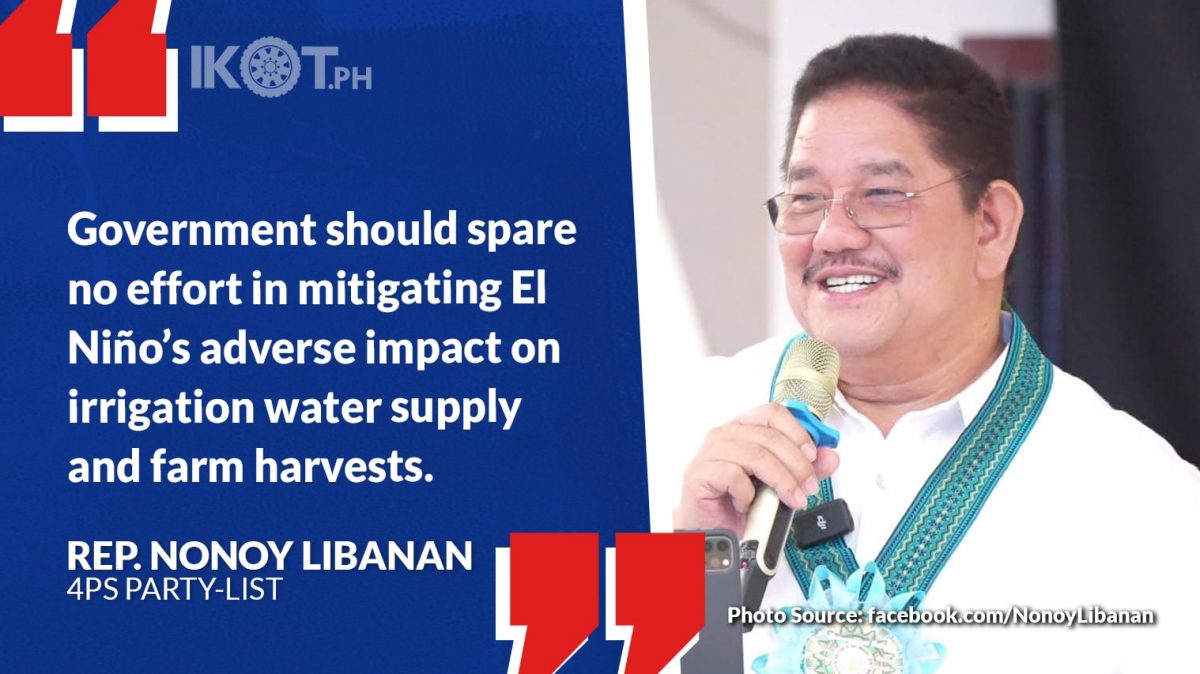The Philippines is on track to lead its Southeast Asian neighbors in economic growth and jobs creation in the months ahead, but severe El Niño weather conditions could pose a significant risk, House of Representatives Minority Leader and 4Ps Party-list Representative Nonoy Libanan said.
“Government should spare no effort in mitigating El Niño’s adverse impact on irrigation water supply and farm harvests, which could put an unwanted upward pressure on food prices,” Libanan said.
The veteran legislator made the statement on the eve of President Ferdinand Marcos Jr.’s second State of the Nation Address (SONA), where he is expected to report on the country’s situation, the government’s agenda for the next 12 months, and recommend to Congress certain legislative measures.
“Right now, investments and employment are on the rise, consumption spending is on the upswing, public and private construction are revving up, and even foreign tourists are coming back in droves.”
“Right now, investments and employment are on the rise, consumption spending is on the upswing, public and private construction are revving up, and even foreign tourists are coming back in droves,” the seasoned lawmaker said.
“It would seem that the President’s overseas promotional trips in his first year in office, particularly to Japan, Singapore and the United States, are starting to bear fruit in generating new investments,” he said.
The Philippines’ gross domestic product (GDP) is projected to grow at 6.0 percent this year – the highest in Southeast Asia, with Vietnam seen expanding by 5.8 percent, Indonesia by 4.8 percent, Malaysia by 4.7 percent, Thailand by 3.5 percent and Singapore by 1.5 percent, the Asian Development Bank (ADB) said in an outlook released on July 19.
The country’s unemployment rate dropped to 4.3 percent in May this year from 6.0 percent in May 2022 and 4.5 percent in April 2023, based on the Labor Force Survey results released by the Philippines Statistics Authority (PSA) on July 7.
Meanwhile, the Philippine Atmospheric, Geophysical and Astronomical Services Administration (Pagasa), in a July 4 bulletin, said: “El Niño is present in the tropical Pacific and will persist until the first quarter of 2024, showing signs of strengthening in the coming months.”
“El Niño increases the likelihood of below-normal rainfall conditions, which could bring negative impacts (such as dry spells and droughts) in some areas of the country.”
“El Niño increases the likelihood of below-normal rainfall conditions, which could bring negative impacts (such as dry spells and droughts) in some areas of the country. However, over the western part of the country, above-normal rainfall conditions during the Southwest monsoon season (Habagat) may also be expected,” the state weather bureau warned.
When the Philippines last endured a full-blown El Niño event in 2019, vast parts of the country, including Metro Manila, reeled from a drought that caused widespread water shortages and farm losses, after dams and lakes that supply potable and irrigation water experienced a massive decline in rainfall.


